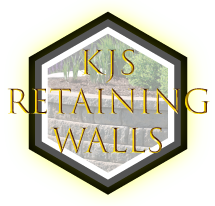GET A QUOTE TODAY




Wood Retaining Walls
Building a wood retaining wall helps to reshape slopes on your property, creating level spaces for driveways, gardens, paver patios, children’s play areas and decks. Retaining walls also keep soil and vegetation away from established structures.
Basics of Low Wood Retaining Walls
A low wood retaining wall relies on the weight of the soil below it to provide support. Low-wall does not need tiebacks, like many other types of timber retaining walls. This is in contrast to most masonry walls which rely more heavily on their own weight for their structural integrity.
The retaining wall posts can be installed once the post holes are dug in the same way as you would dig for fence posts. Then, pressure-treated boards are nailed across the backs of the posts to provide the wall much like a fence.
Wood retaining walls should remain low. Heights greater than 24 to 30 inches would put pressure on the back of the wall, leading to erosion and eventual failure.
Are wood retaining walls good?
Wood retaining walls provide a low cost, natural looking option for landscaping and garden paths. They help to stabilize slopes with their strong structure and also keep dirt away from foundations of nearby structures.
What is the cheapest retaining wall material?
Retaining wall materials varies in price from relatively inexpensive to very expensive. Treated pine, for the most part, would be considered the cheapest option at $250 per square meter. In order of price, here are some retaining wall cost ideas for different materials:
Treated pine is the least expensive of all materials, but it won’t last as long. To increase its lifespan, galvanized posts should be installed between two frames.
Hardwood is more expensive than treated pine and it requires a specific degree of treatment to make it more resistant to the dirt and water.
Railway sleepers are a slightly more expensive option, but they withstand ground and water contact.
One of the factors you’ll need to consider when choosing a type of retaining wall is its longevity. While treated pine and hardwood may be less expensive upfront, they are not as durable as other options like concrete or natural stone.
The lifespan of a wood retaining wall depends on its resistance to moisture and pests, among other things. While the inexpensive choice might seem straightforward considering it’s the easiest option, when you factor in future maintenance costs as well as outliving your lifetime, it is not the most cost effective.
How long do wood retaining walls last?
The life cycle of a timber retaining wall varies depending on how it is maintained, but on average, they can last for 30 to 40 years. Wood retaining walls are not as durable and may need to be replaced if the wood is water-logged or infested with termites. Wood should never be considered a permanent solution for slope stabilization, but it can work well in some cases like creating stepping stones across a steep area of land.
What kind of wood should I use for a retaining wall?
The lumber typically used in these walls is Douglas fir, which is pressure treated to discourage rot. It will be green or brown in color and rated for earth-to-wood contact. For timber walls, large timbers are awfully expensive, so other alternatives such as railroad ties are a common option.